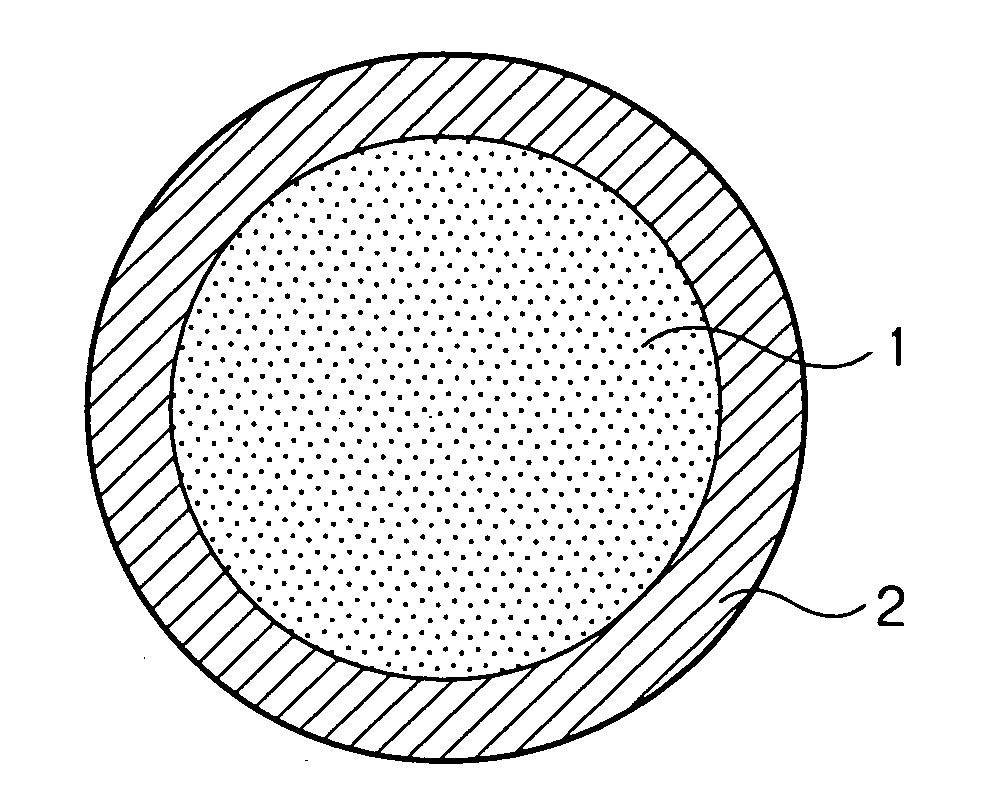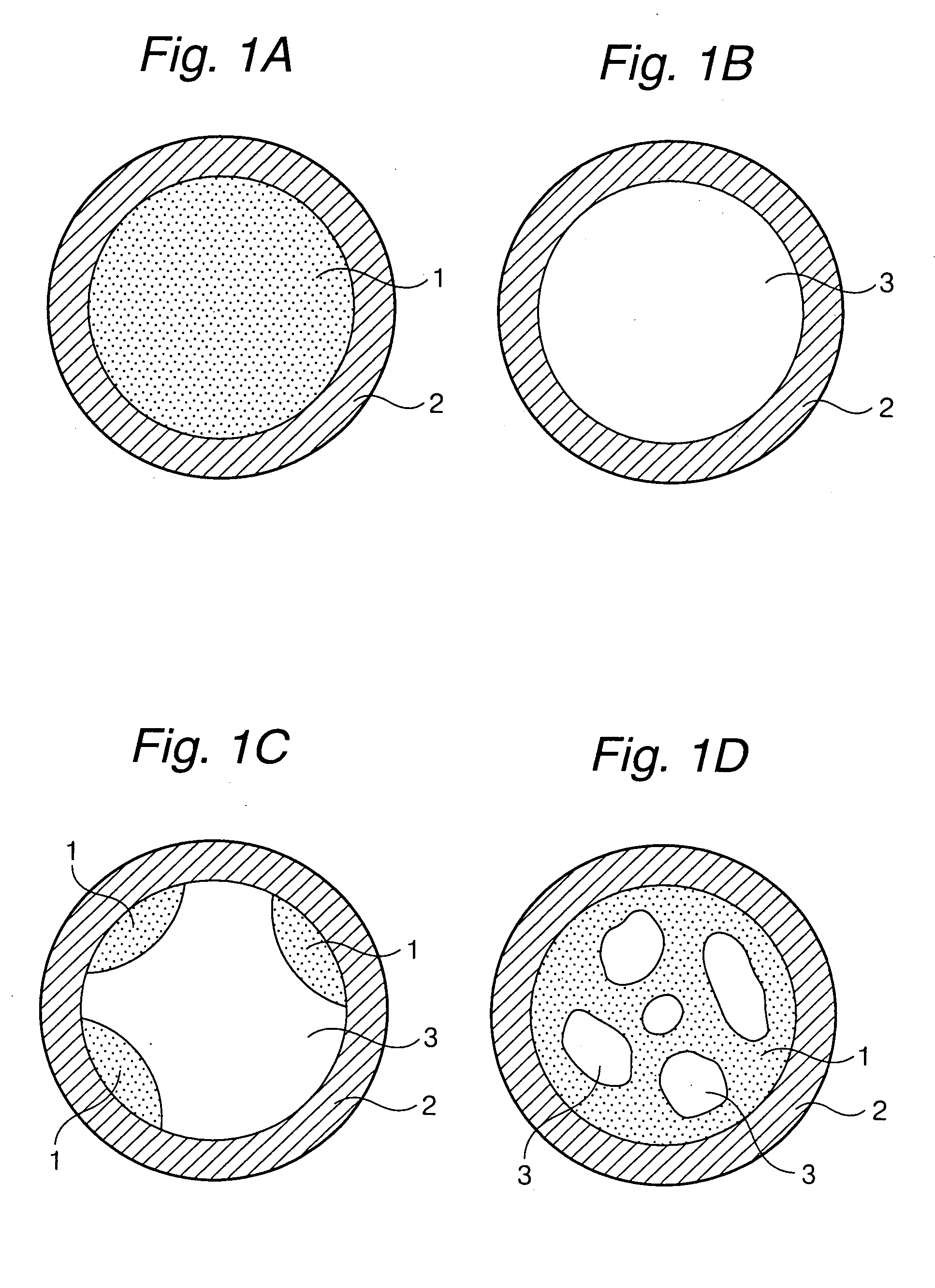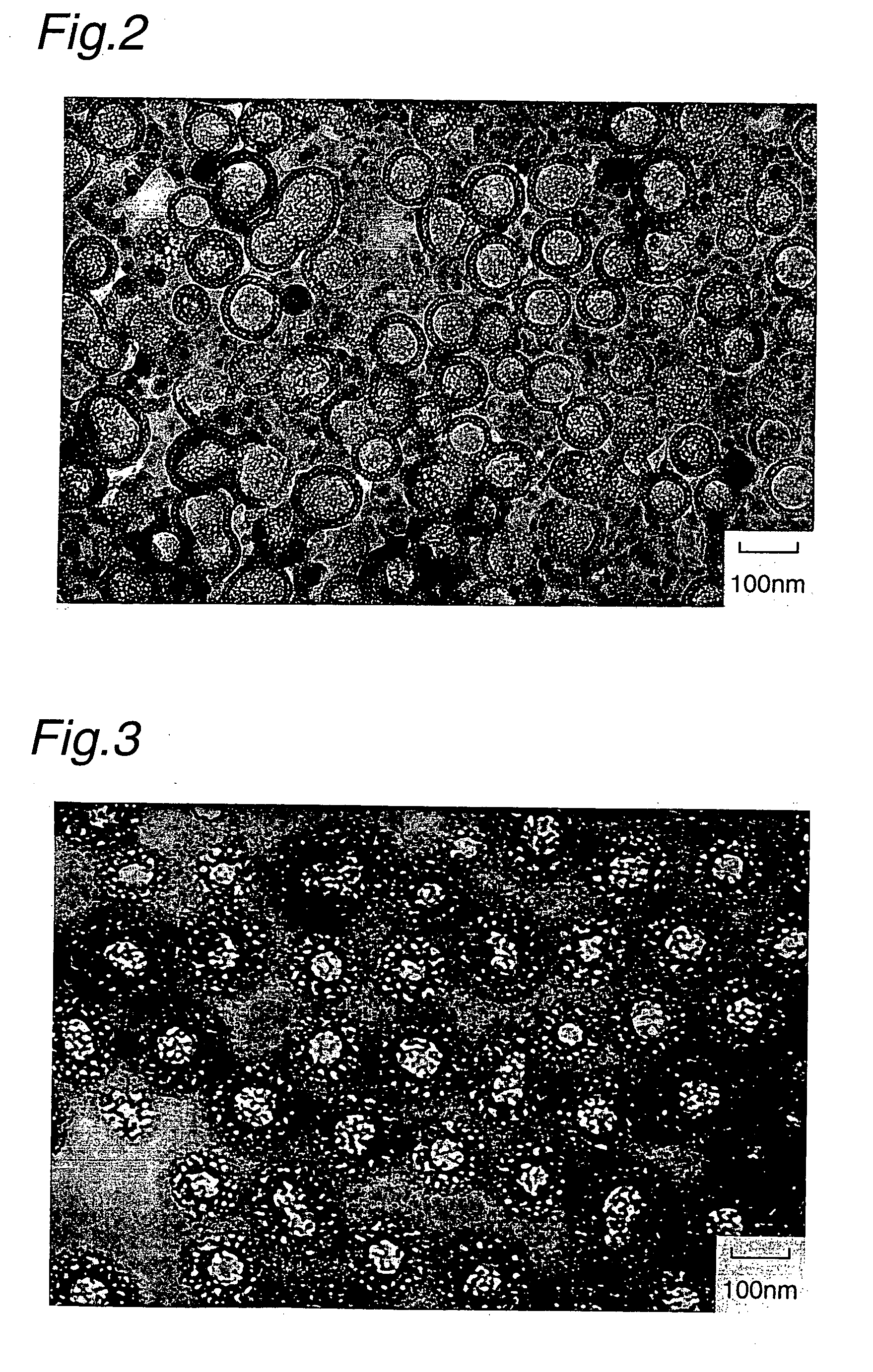Inorganic compound particle and process for preparation thereof
a technology of organic compound and film, which is applied in the field of organic compound particles, can solve the problems of difficult to fix the particles onto the substrate surface or form a single layer film, control the surface reflectance, and high cost, and achieve low cost and high hydrophobicity. , the effect of low shrinkage property
- Summary
- Abstract
- Description
- Claims
- Application Information
AI Technical Summary
Benefits of technology
Problems solved by technology
Method used
Image
Examples
preparation example 1
Preparation of Inorganic Compound Particle P-1 (Porous Matter Enclosed by Shell)
A 100 g portion of silica sol having average particle diameter of 5 nm and containing SiO2 at a concentration of 20% by weight, and 1,900 g of pure water were mixed to prepare a reaction mother liquor. The mother liquor was heated to 80° C. The mother liquor had a pH of 10.5. To the mother liquor were added simultaneously 9,000 g of aqueous sodium silicate solution (1.5% by weight in terms of SiO2) and 9,000 g of sodium aluminate (0.5% by weight in terms of Al2O3) by keeping the temperature at 80° C. The pH of the reaction solution rose to 12.5 immediately after the addition of the sodium silicate and the sodium aluminate, and was nearly constant thereafter. After completion of the addition of the solutions, the reaction liquid was cooled to room temperature and washed by ultrafiltration to obtain a liquid dispersion (A) of a porous material precursor particle containing SiO2.Al2O3 at a solid matter c...
preparation example 2
Preparation of Inorganic Compound Particle P-2 (Porous Matter Enclosed by Shell)
To 10 g of the liquid dispersion (A) of the porous material precursor particle obtained above, 1,900 g of pure water was added and the mixture was heated to 95° C. By keeping this temperature, 27,000 g of an aqueous sodium silicate solution (1.5% by weight in terms of SiO2), and 27,000 g of an aqueous sodium aluminate solution (0.5% by weight in terms of Al2O3) were added gradually concurrently to grow particles by utilizing, as seed, the particles of the liquid dispersion (A) of the porous material precursor particle. After completion of the addition, the mixture was cooled to room temperature, and washed and concentrated by ultrafiltration to obtain a liquid dispersion (C) of a porous material precursor particle containing SiO2.Al2O3 at a solid matter concentration of 20% by weight. (Step 1)
A 500 g portion of this liquid dispersion (C) of the porous material precursor particle was treated in the s...
preparation example 3
Preparation of Inorganic Compound Particle P-3 (Porous Matter Enclosed by Shell)
To 10 g of the liquid dispersion (C) of the porous material precursor particle obtained above, 1,900 g of pure water was added and the mixture was heated to 95. By keeping this temperature, 7,000 g of an aqueous sodium silicate solution (1.5% by weight in terms of SiO2), and 7,000 g of an aqueous sodium aluminate solution (0.5% by weight in terms of Al2O3) were added gradually concurrently to grow particles. After completion of the addition, the mixture was cooled to room temperature, and washed and concentrated by ultrafiltration to obtain a liquid dispersion (D) of a porous material precursor particle containing SiO2.Al2O3 at a solid matter concentration of 13% by weight.
To 500 g of this liquid dispersion (D) of the porous material precursor particle, 1,125 g of pure water was added, and thereto hydrochloric acid (35.5%) was added dropwise to adjust the pH to 1.0. The liquid mixture was treated fo...
PUM
| Property | Measurement | Unit |
|---|---|---|
| particle diameter | aaaaa | aaaaa |
| thickness | aaaaa | aaaaa |
| molar ratio | aaaaa | aaaaa |
Abstract
Description
Claims
Application Information
 Login to View More
Login to View More - R&D
- Intellectual Property
- Life Sciences
- Materials
- Tech Scout
- Unparalleled Data Quality
- Higher Quality Content
- 60% Fewer Hallucinations
Browse by: Latest US Patents, China's latest patents, Technical Efficacy Thesaurus, Application Domain, Technology Topic, Popular Technical Reports.
© 2025 PatSnap. All rights reserved.Legal|Privacy policy|Modern Slavery Act Transparency Statement|Sitemap|About US| Contact US: help@patsnap.com



